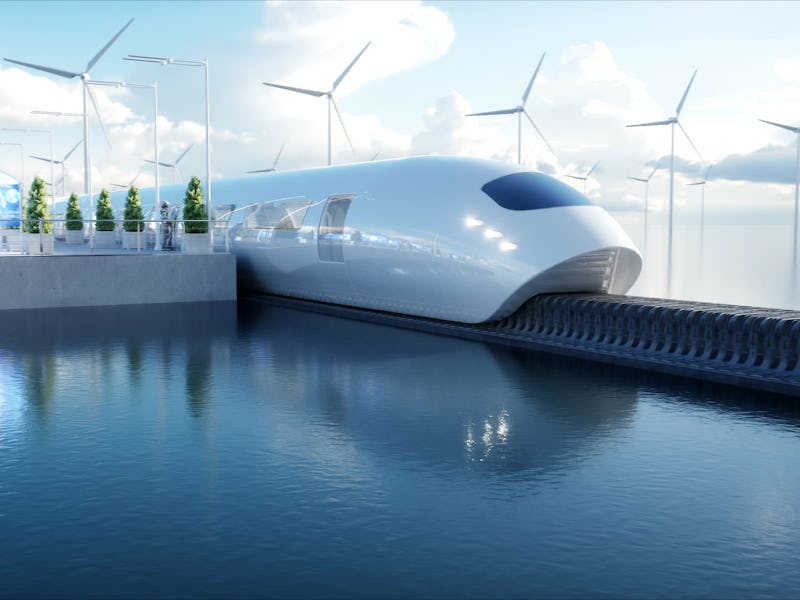Hyperloop is taking a ‘crucial’ step toward continent-wide travel
Hyperloop remains a pipe dream. New standards could help the industry get its act together.

Hyperloop, Elon Musk's proposed vacuum-sealed pod transit system, has taken a step toward a multinational standard.
The European Committee for Standardization, in collaboration with the Committee for Electrotechnical Standardization, announced this month plans to form a Joint Technical Committee focused on "hyperloop systems standardization." The teams declared in the announcement that European standardization "is crucial to achieve a coherent roll-out of this new tool of mobility."
It could be a major step forward for the futuristic transit system. Musk first outlined his idea for hyperloop in a 2013 white paper. It would offer speeds of up to 700 mph, faster than a jet engine, meaning it could traverse the 380 miles between San Francisco and Los Angeles in just 35 minutes. It could power itself with solar panels on top of the tube, and it could offer one-way tickets on the above route for just $20.
Despite its bold promises, there are still no public hyperloop tracks anywhere in the world. SpaceX has held four hyperloop pod design competitions at its California campus. The fourth, in July 2019, saw TUM Hyperloop set a 288 mph record on the 0.8-mile track. Its proponents claim that a longer track could enable it to reach those promised speeds – TUM places the figure at around nine miles minimum – but building a longer track requires a tough leap of faith from investors into the long-term viability of the system.
Standardization, companies involved in hyperloop claim, could help bring the project to life. A four-company consortium has been pushing for wider steps toward standardization:
- TransPod, a Canadian firm that previously announced plans to build a 1.86-mile test track in France.
- Zeleros Hyperloop, a Spanish firm aiming "to become one of the main European players developing this disruptive system."
- Hyper Poland, a Polish firm working to bring hyperloop technologies to existing railways and corridors.
- Hardt Hyperloop, a Dutch firm. The firm grew out of the first SpaceX hyperloop competition in January 2017, after members of winning team Delft Hyperloop went on to form Hardt.
The consortium praised the announcement in a press release Tuesday, declaring that "the potential impact this may have on interoperability of infrastructure, rolling stock, signalling, and other subsystems is substantial." The team added that the committee "will help to mitigate potential challenges to implementation across the continent."
A hyperloop-connected city could benefit from standards.
If the United States' experience with trains showed anything, it's that standards are ideal for connecting up continents. Early American railroads ran to different track gauges, meaning the distance between two rails varied from place to place. This changed during the Lincoln administration, after it became clear that trans-continental rail would prove a nightmare with conflicting track gauges along the way.
While the hyperloop standardization project is focused on Europe for now, it could lead to an international standard further down the line. CEN works closely with the International Organization for Standardization, also known as ISO. The 1991 Vienna Agreement ensures the two work together on new standards projects, which in turn will avoid duplicating work as much as possible.
It's important to note that CEN covers more countries than just the 27-member-state European Union, encompassing a further seven member states. That could mean even post-Brexit Britain gets to play a role in the future of transport. The British Standards Institute is expected to update the group on its future in the group ahead of December 2020.
But with hyperloop currently limited to short test tracks, it may take more than just standardization to encourage a continent to get connected.